#maasai giraffes
Explore tagged Tumblr posts
Text

Six Maasai giraffes (Giraffa camelopardalis tippelskirchi) crossing the Talek River at dusk, Masai Mara, Kenya, Africa.
Photographer: Charlie Hamilton-James
#charlie hamilton-james#photographer#maasai giraffes#giraffa camelopardalis tippelskirchi#animal#mammal#wildlife#talek river#dusk#masai mara#kenya#africa#nature#giraffe
13 notes
·
View notes
Text

Grant's zebra Equus quagga boehmi, front
Maasai giraffe Giraffa tippelskirchi tippelskirchi, back
Observed by heinrichhuman, CC BY-NC
#multi-ungulate#Equus quagga boehmi#Grant's zebra#Equidae#horse#Giraffa tippelskirchi tippelskirchi#Maasai giraffe#Giraffidae#giraffe#Africa#Tanzania
27 notes
·
View notes
Text


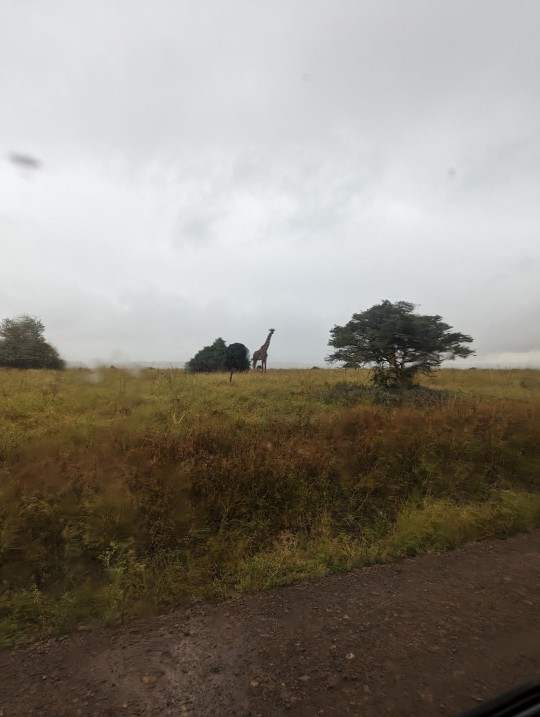
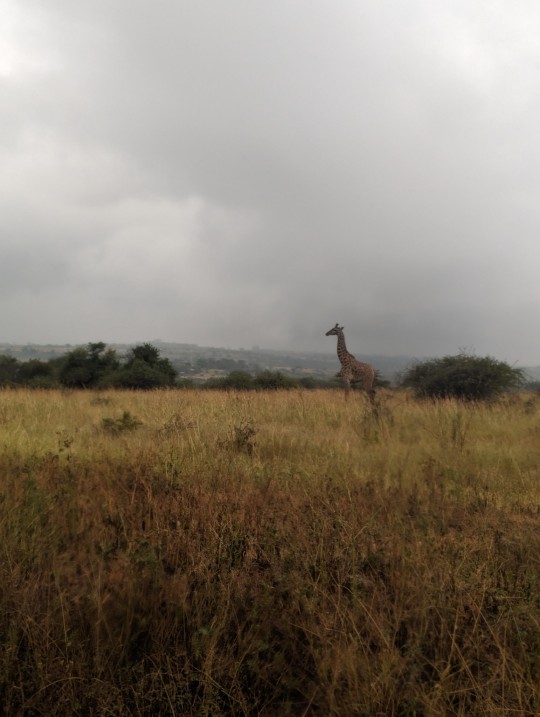
Giraffes in a conservation centre + giraffes in the wild
4 notes
·
View notes
Text
Kenya Safari - Fix Departure on 30th November 2024
#ONCEuponaLIFEinKENYA #KenyaSafari Fix Departure on 30th November 2024 4 Nights / 5 Days Price Per Person on Sharing basis : USD 1180 Inclusions : ~ Airport transfers ~ Visit to #GiraffeCenter with snacks enroute ~ 1 night in #Nairobi on Bed & Breakfast ~ 2 nights in #MaasaiMara on Breakfast, Lunch, Dinner ~ 1 visit to the #MaasaiVillage ~ 1 night in #Naivasha on Breakfast, Lunch,…

View On WordPress
#adler#Adler Tours#Adler Tours and Safaris#Adler Tours Safaris#Africa#African Safari#African Safari Holidays#African Safari Packages#African Safari Tours#Budget African Safari#Budget Safari Trip#CAR HIRE#Car Hire In Rajkot#CAR ON RENT#Car On Rent In Rajkot#East Africa#family Holidays#Family Safari#Family Tour#Giraffe Center#Gujarat#India#Kenya#Kenya Safari#Lake Naivasha#Maasai Mara#Maasai Village#Masai Mara#Nairobi#Naivasha
0 notes
Text
An African childhood
I spent most of my childhood in Africa, from 1959 to 1970. First in West Africa, then, after a brief Dutch interlude, we went to Kenya, East Africa, in 1967. Kenya’s independence was quite recent: December 1963. The first president was Mzee (old man) Jomo Kenyatta, the leader of the Independence movement. For us kids, the magic of Africa was an every day matter. The above is a “red” elephant at…

View On WordPress
0 notes
Text

This handsome male giraffe has a little hitchhiker. I took this in the Maasai Mara and had to crop in a lot when editing!
#lightroom#nature#nature aesthetic#nature photography#photo#photoblog#sony#sony alpha#animals#wildlife#giraffe#kenya#safari#safariphoto#travel#travelphotography
155 notes
·
View notes
Text
Unit 05 Blog Post
I was brought up in Eldoret, a town that rests in the heart of Kenya, near one of the greatest natural wonders on Earth, the Rift Valley. The sheer scale of the Rift Valley, the largest of its kind, has always been a breathtaking sight for me. Spanning thousands of kilometers from Lebanon in the north to Mozambique in the south, the Great Rift Valley runs through Kenya, carving out a beautiful landscape that is both vast and rugged. Its significance in shaping nature and the lives of the people who live near it, including my own, is immense.

An image of the Rift Valley captured from the valley floor. See if you can spot the waterfall in the image above.
As a child growing up near the valley, I remember standing on its edge, staring into the seemingly endless horizon. The Rift Valley is more than just a geographical feature; it is a living, breathing ecosystem that has a dynamic relationship with the wildlife, vegetation, and communities that inhabit it. The valley is a cradle of biodiversity, home to a range of ecosystems from dry savannas and wide grasslands, dramatic escarpments and fertile plains.

An image of the Rift Valley taken from the edge.
Nature in the Rift Valley is something I came to appreciate deeply. The valley is a host to countless animals, including some of the most iconic species of East Africa, such as elephants, giraffes, zebras, and lions. The wide plains of the valley offer these animals plenty of space to roam, and it is not uncommon to witness them in their natural habitat when visiting nearby national parks like the Maasai Mara. The Rift Valley lakes, including Lake Naivasha and Lake Nakuru, are vital water sources for these creatures, making the valley a true haven for wildlife.
The valley's landscape is marked by dramatic features that are a testament to the forces of nature at work over millions of years. The escarpments, which rise steeply from the valley floor, provide stunning views that capture the vastness of the land. Standing at the edge of these cliffs, one can appreciate the sheer scale and geological history of the valley. It’s humbling to think that the Rift Valley was formed as a result of tectonic forces, with the earth’s crust pulling apart, creating the gaping chasm that now defines the region.
The beauty of the Rift Valley is not only in its grand scale and geological significance but also in the subtle details of everyday life. Whether it’s the cool breeze that sweeps down from the escarpments or the vibrant sunsets that light up the sky, the valley has a way of making you feel connected to something ancient and enduring. It is a constant reminder of the power and beauty of nature, a place where one can feel small yet part of something immense. Growing up near this natural wonder has shaped my view of the world, giving me an enduring love for nature and its complexities.
8 notes
·
View notes
Note
If the new characters did get brought into a paw and claws event (please devs) what animal do you think they would be?
I actually made this post here about what animals fit them in the same vein of Lucifer's being a peacock and Mammon's a crow etc.
But it's a little more difficult to match animals for the paws event for them because there those animals are a bit more random? Like yes okay there are some similarities between the animals and the characters but at the same time who would guess a giraffe for Levi?????
But here's my best guess:
1.) Thirteen
The Rosy Maple Moth


• Pink = pink hair
• Yellow = yellow nail polish
• Moths are a symbol of death in some places
• As caterpillars they can deliver a venomous sting = her traps
• Keeping up the theme of pairing her with adorable creepy-crawlies
2.) Mephisto
Thoroughbred Horse Breed
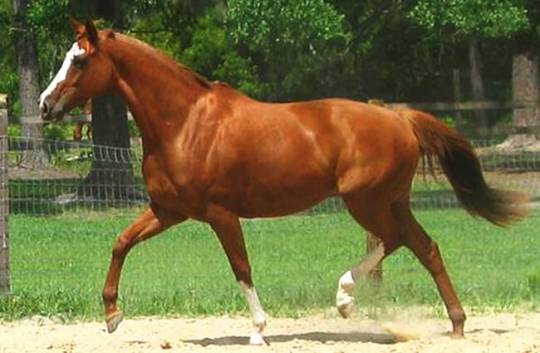
• The man likes horse so I figured I might as well give him a win
• One of the most expensive horse breeds = Mephisto being one of the richest demons
• Big and strong
• Good with kids
• Stubborn streak
• With a name like "thoroughbred" I can't stop thinking about Mephisto's thing against anyone who wasn't purely a demon.......
This ended with me going down a blackhole reading about different horse breeds....
3.) Raphael
Secretary Bird
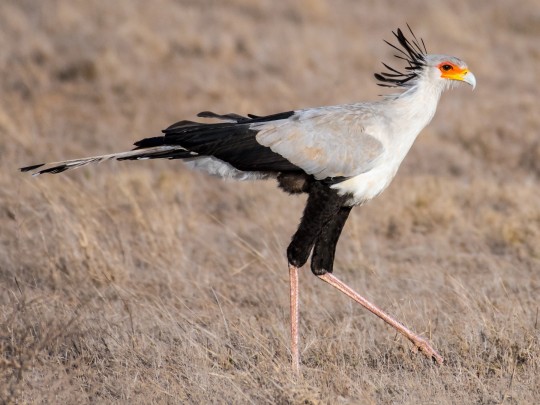
• Looks at Raphael's white clothes and black sleeves....Looks at this bird.... hmmmmm
• Beautiful but a bird of prey = angel who is more than willing to kill people
• "occasionally prey on larger mammals such as hedgehogs, mongooses, small felids such as cheetah cubs, striped polecats, young gazelles, and both young and full-grown hares." "venomous species such as adders and cobras are regularly among the types of snakes preyed upon" = is dangerous to demons
• "A bird will chase after prey with the wings spread and kill by striking with swift blows of the feet." "secretarybird relies on superior visual targeting to determine the precise location of the prey's head" = chasing down others and attacking using spears + him the the celestial realm's hitman
• "The Maasai people have used parts of the bird in traditional medicine" = Raphael being "the Angelic Prince of Healing" in religion
• Raphael's just more or less Michael's secretary in om!
I actually want to swap what I chose for Raphael's familiar animal with his paws event animal because this one fits way better as a familiar.
Bonus Round:
4.) Michael
Bottlenose Dolphin
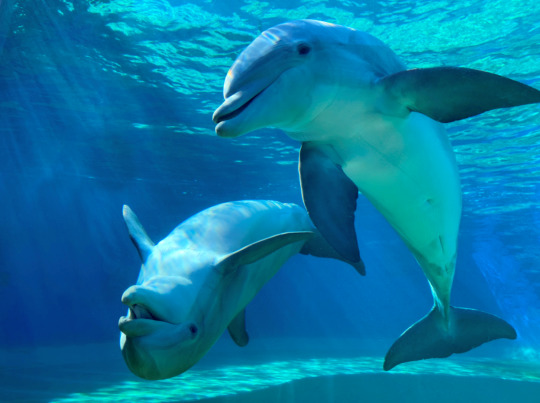
• Adorable
• Friendly
• Playful
• Energetic
• Intelligent
• Occasionally protects humans
• Can and will fuck you up if they feel like it in spite of the great reputation they have garnered
#obey me#obey me shall we date#obey me!#shall we date? obey me!#swd obey me#swd obey me!#shall we date obey me#obey me raphael#obey me thirteen#obey me mephistopheles#obey me michael#om! raphael#om! mephistopheles#om! thirteen#om! michael#obey me! raphael#obey me! michael#obey me! thirteen#obey me! mephistopheles#om raphael#om michael#om thirteen#om mephistopheles#shall we date raphael#shall we date thirteen#shall we date michael#swd raphael#swd thirteen#swd michael#swd mephistopheles
111 notes
·
View notes
Text

● Nick Brandt Giraffes Battling in Forest, Maasai Mara, 2008
Follow me on instagram.:
https://www.instagram.com/only_analogue_photography
14 notes
·
View notes
Text
Three Incredible African Safari Destinations

Africa is a famous vacation spot, with millions of tourists visiting the continent yearly to go on safari, a word in Swahili meaning trip. Visitors who go on safari have the opportunity to see a wide variety of wild animals in their natural habitat. Among the many safari destinations, Kenya, Tanzania, and South Africa are considered to be the best places to experience the beauty and splendor of the African wilderness.
For good reason, Kenya has long been regarded as the birthplace of the safari. It is home to the world-renowned Maasai Mara National Reserve, which gives tourists the chance to see the "Big Five" (elephant, buffalo, rhinoceros, lion, and leopard) and other wildlife including giraffes, hippos, and hyenas in one location. The Mara's diverse topography, from expansive savannahs to green riverine forests, provides the perfect backdrop for wildlife observation and photography.
The best time to go on safari in Kenya is during the dry season, which runs from July to October. This is when the spectacular Great Migration takes place, with over 1.5 million zebras, gazelles, and wildebeest moving from Tanzania's Serengeti National Park to Kenya's Maasai Mara in search of greener pasture. To reach the Maasai Mara during the Great Migration—which is recognized as one of the world's new wonders—the animals have to swim across the Mara River, which is packed with crocodiles, and sadly, many of them do not make it through the crossing. Predators such as lions, cheetahs, and leopards that lurk in the Maasai Mara still pose a threat to those animals that survive the Mara River crossing. Every year, thousands of visitors travel to Kenya and its neighbor Tanzania to witness the Great Migration.
Between July and October, travelers to Tanzania can also be a part of the Great Migration at the popular Serengeti National Park, which rivals Kenya's Maasai Mara in terms of natural beauty and wildlife. Tanzania is also home to the Ngorongoro Crater, a UNESCO World Heritage that hosts thousands of wild animals, including a large population of lions, elephants, wildebeest, and rhinos, making it one of the most densely populated wildlife areas in the world.
Another must-see destination in Tanzania is Mount Kilimanjaro, Africa's tallest peak. While not a traditional safari location, the iconic mountain adds to Tanzania's allure, offering opportunities for trekking and stunning panoramic views of the surrounding landscapes. Travelers interested in a more cultural experience can also interact with the Maasai people, a nomadic tribe living in Tanzania and Kenya who have rich traditions and a strong bond with the land and wildlife.
In South Africa, a well-liked safari attraction is Kruger National Park. This park is one of Africa's largest wildlife sanctuaries, spanning around 20,000 square kilometers. More than 500 bird species and 147 mammal species call it home, and many of the Big Five animals can also be spotted by visitors at Kruger National Park. The ideal time to go on safari at Kruger is also during South Africa's dry season, from April to October. At this time, animals congregate around waterholes and are easier to find because of the scant vegetation.
South Africa provides opportunities to visit wineries, seaside towns, and historical places like Nelson Mandela's jail cell at Robben Island, Cape Town, for people who want to mix a safari with other pursuits.
5 notes
·
View notes
Text

Standing still - Maasai giraffe in Randilen Wildlife Management Area, Tanzania.
The Nature Conservancy’s engagement in the Randilen WMA is driven by the need to protect this unique ecosystem, which serves as a crucial habitat for a diverse range of wildlife, including elephants, lions, greater kudu, and African wild dogs.
This landscape is part of the larger Tarangire-Manyara ecosystem, a vital corridor for wildlife movement between protected areas, supporting rich biodiversity that is under threat from habitat loss and fragmentation, poaching, and human settlement expansion.
📸 © Roshni Lodhia
#naturenow #NatureAfrica
3 notes
·
View notes
Photo

“Leaning Towers”
by Abderazak Tissoukai (UAE).
The Greatest Maasai Mara Photographer of the Year.
#abderazak tissoukai#photographer#united arab emirates#greatest maasai mara photographer of the year#black & white photography#giraffes#animal#mammal#wildlife#nature#maasai mara
37 notes
·
View notes
Text

Maasai giraffe Giraffa tippelskirchi tippelskirchi
Observed by ornithondar, CC BY-NC
#Giraffa tippelskirchi tippelskirchi#Maasai giraffe#Giraffidae#giraffe#non-ungulate#bird#passerine#Buphagus erythrorhynchus#red-billed oxpecker#Africa#Kenya
32 notes
·
View notes
Text
Manyara Ranch: African Wildlife Foundation
Good story from the African Wildlife Federation. Tap/click on the caption to get to the PDF version of the report.

Excerpt:
A long time ago, the people of Tanzania and their livestock adopted to living alongside wildlife. For millennia, the Maasai have tracked the movements of wildebeests to identify good grazing; the favorite hideouts of lions to avoid attacks on cattle; and the presence of oxpeckers to know if dangerous buffalo are nearby.
In the past 60 years, however, drastic changes have come to the Maasai Steppe, a large semi-arid grassland ecosystem in north-central Tanzania. Large-scale farms, the expansion of safari tourism, the creation of national parks, and restricted access to once communally used land have squeezed the rangeland available to livestock. With more cattle on less land, grasslands are becoming overgrazed. The spread of human settlements and agriculture have blocked age-old wildlife migration routes, leading to more frequent—and sometimes deadly—confrontations between people and animals. And climate change, which has intensified droughts and upended rainfall patterns, is escalating competition for green grass and fresh water, pushing even more pastoralists to agriculture.
Anchoring the Maasai Steppe are Tarangire and Lake Manyara National Parks, where the shores of the eponymous river and lake abound with wildlife in the dry season. The steppe is home to some of the world’s most abundant and diverse wildlife, including one of the largest—and growing– populations of elephants in Africa (recovering from heavy poaching in the 1970s and 1980s) and the only stronghold of the eastern white-bearded wildebeests. The ability to move between the parks and beyond them into the plains is crucial for the survival of many of the ecosystem’s most iconic species, including elephants and wildebeests. But safe, unimpeded pathways are becoming scarce. In between the two parks, in the all-important Kwakuchinja wildlife corridor, sits a patchwork of villages, farms, large herds of livestock, grasslands—and Manyara Ranch.
Since 2001, the African Wildlife Foundation (AWF) has championed a unique conservation model for the ranch, starting with negotiations with the government to form a land conservation trust to make the ranch a conservation space. Beginning in 2013, we took over direct management of the ranch, balancing the working cattle ranch with habitat restoration and wildlife conservation—a new model for Tanzania.While Tanzania’s pastoralists generally are prohibited from bringing livestock into national parks, cattle are a nonnegotiable part of the region’s economy and culture. Therefore, successful conservation of land outside formal protected areas depends on the sustainable coexistence of livestock and wildlife, particularly along migration routes where wildlife move outside of the boundaries of the parks. Manyara Ranch is a vital link along one of those migration routes. It helps connect the national parks to each other and to the wet-season grazing grounds of the Northern Plains, described as the “last, best remaining breeding ground” for the ecosystem’s migrating wildebeest, zebras, gazelles, and others. In addition to the migrating animals that seasonally pass through, the ranch today is home to resident giraffes, lions, and many other iconic African species—as well as more than a thousand cattle.
The lease to the land is now held by the Monduli District Council, and the day-to-day running of the ranch is managed by the Manyara Ranch Management Trust, composed of representatives from the Monduli council, two local villages, the Tanzania Wildlife Management Authority, and AWF.
“The vision for a project like this is to bring management expertise to the local stakeholders. We want to think inclusively and really focus on creating local partnership in decision-making regarding operations,” said Pastor Magingi, AWF’s Tanzania Country Coordinator.
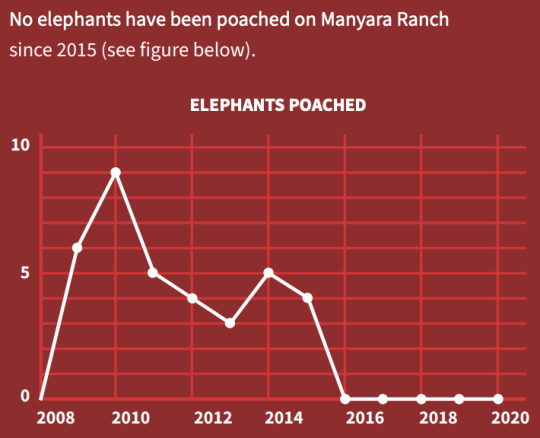

3 notes
·
View notes
Text
SLAYING SAMBURU SWEETNESS By William Warigon
SLAYING SAMBURU SWEETNESS From the chores of breast feeding feat,Vegetables and fruits gathering, A Samburu sweet lady’s slaying In vibrant attire of nomadic pastoralist.Delicate in her mien and candour,She’s friends to Grevy zebra, Somali giraffe,The Oryx and gerenuk in splendour.Gentle winds dance to the music in her laugh. The Maasai men swoon at her swaying As their women turn green…

View On WordPress
2 notes
·
View notes
Text
Rwanda Gorilla Safari: A Superb Opportunity To View The Mountain Gorillas
Little and compact, Rwanda is overflowing with untamed wildlife, amazing national parks, and superb scenes. The gorilla-chimpanzee trekking in Rwanda gives you an extraordinary chance to explore the national treasure. How to catch a glimpse of the typical safari creatures? Embarking on a Rwanda gorilla safari tour is imperative
Trekking to see chimpanzees and gorillas is without a doubt a feature of the Rwanda gorilla safari tour. It ensures a close encounter with the primates present in the various national parks and jungles. It is an immersive experience.
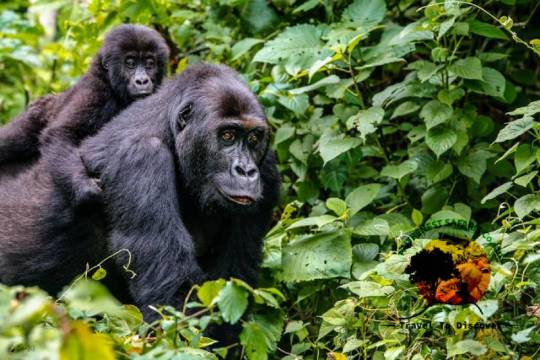
This remarkable journey will transport you to the picturesque savannah reserve in Rwanda. It is where you will encounter a diverse array of wildlife, including leopards, elephants, buffalos, zebras, lions, black and white rhinoceroses, panthers, giraffes, and an abundance of antelope species such as topi, impala, and defassa waterbuck.
Rwanda boasts three primary wildlife destinations: Volcanoes National Park, Nyungwe Forest National Park, and Akagera National Park. All of them are home to a wide range of fauna. Among these, Rwanda stands as one of the three countries where endangered mountain gorillas can be found. Observing these magnificent creatures in their native environment is an incomparable wildlife encounter. Additionally, visitors have the opportunity to track habituated chimpanzees and golden monkeys, similar to the thrilling gorilla trek. Rwanda's diverse habitats provide a sanctuary for numerous species, including mountain gorillas, chimpanzees, golden monkeys, hippos, giraffes, zebras, leopards, crocodiles, and over 600 bird species.
Volcanoes National Park is renowned for its diverse population of mountain gorillas, with several hundred individuals residing there. The park offers the opportunity to observe a dozen habituated gorilla groups, and a total of 96 tracking permits are issued daily for this purpose. In addition to gorillas, the park is home to various other wildlife species such as the golden monkey, elephant, buffalo, giant forest hog, bushpig, bushbuck, and black-fronted duiker. Bird enthusiasts will find around 200 bird species, including 16 Albertine Rift Endemics, although birdwatching logistics can be challenging in this area.
Nyungwe Forest National Park, on the other hand, boasts the highest level of biodiversity in Rwanda. It safeguards over 1,050 plant species and supports a rich array of wildlife, including 85 mammal species, 310 bird species, 32 amphibian species, and 38 reptile species. Among the park's highlights are its thirteen primate species, such as chimpanzees, Ruwenzori colobus monkeys, L'Hoest's monkeys, and various other monkey species. Nyungwe is also renowned as a premier destination for forest bird watching in Africa, attracting dedicated birdwatchers from around the world.
Akagera National Park is a traditional African savannah reserve where visitors have the opportunity to spot the Big Five. While buffaloes and elephants are commonly sighted, leopards are frequently observed during night drives. The presence of lions and black rhinos is also steadily increasing. In addition to these magnificent creatures, the park is home to a diverse range of wildlife including Maasai giraffes, Burchell's zebras, warthogs, olive baboons, vervet monkeys, hippos, impalas, Defassa waterbuck, bushbucks, common duikers, elands, topis, Bohor reedbuck, oribis, roan antelopes, klipspringers, and the elusive semi-aquatic sitatungas. Night drives often offer sightings of spotted hyenas, genets, civets, white-tailed mongooses, bushbabies, elephant shrews, as well as various species of owls and nightjars.
Combine game viewing in the National Park with its varied wildlife & gorilla trekking in Rwanda could make your journey exciting. It could be a superb opportunity to view the mountain gorillas and experience Africa’s largest protected wetland. To get the best of Rwanda gorilla safari tour including bird watching, local community tour, forest walk & experiencing the wilderness contact Nature Nest safaris at +256 777131912 or visit https://www.naturenestsafaris.com/ today!
3 notes
·
View notes